Effective Strategies for Eliminating Flies and Gnats
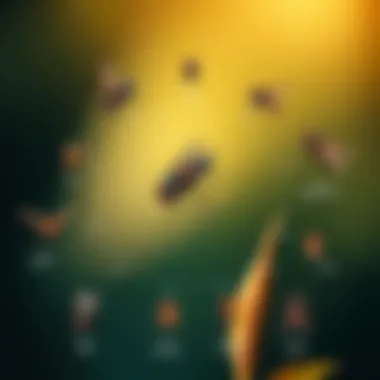

Intro
Flies and gnats are not just a nuisance; they’re pests that can infest homes, gardens, and even farms. These unwanted guests multiply at breakneck speed, making any minor issue feel like a full-blown invasion. Understanding the life cycle and behavior of these insects is crucial for effectively managing them. In this guide, we'll delve into practical strategies to eliminate these pesky creatures while also emphasizing eco-friendly approaches that are as gentle on your surroundings as they are effective against pests.
Animal Species Profile
Prologue to the Animal Species
While flies and gnats might seem like simple nuisances, their presence can indicate underlying issues in your environment, from rotting food to excessive plant moisture. Flies belong to different families, the most common being house flies and fruit flies, whereas gnats are typically considered a part of the genus Bradysia and Sciaridae. Each species brings its own set of challenges, which makes understanding their biology all the more important.
Physical Characteristics and Appearance
Flies are generally characterized by their two pairs of wings, large eyes, and a lightweight body. The common house fly, for instance, has a grayish appearance with a distinctive pattern on its back. On the other hand, gnats are often smaller, with thin bodies and long legs, making them more agile in flight. Their size can vary significantly, but they often congregate in swarms, making them a sight for sore eyes.
Natural Habitat and Distribution
These insects have adapted to thrive in various habitats. Flies are commonly found in urban areas, often attracted to food waste, while gnats prefer damp environments like gardens or areas with a lot of decaying organic matter. Their distribution spans across the globe; you'll find them virtually everywhere, provided the conditions are right.
Behavior and Social Interactions
Flies and gnats exhibit interesting behaviors. Flies are notorious for their rapid breeding cycles, sometimes laying hundreds of eggs at once. Their feeding habits, often messy, further exacerbate cleanliness issues. Gnats, particularly fungus gnats, prefer to feast on decaying plant matter, making them significant players in ecological systems. They communicate primarily through chemical signals released while they fly or when feeding, revealing a complex interaction pattern.
Insights on Elimination Strategies
Understanding these species lays the groundwork for exploring effective elimination strategies. By recognizing their habits and preferences, you can implement targeted approaches to combat these insects. From preventive measures—like maintaining a clean environment—to more hands-on solutions, there’s a toolbox full of options.
"An ounce of prevention is worth a pound of cure."
Implementing various tactics tailored to the unique characteristics of flies and gnats can mean the difference between a peaceful, pest-free space and a never-ending battle.
Stay tuned as we unravel practical strategies, both preventive and remedial, to reclaim your space from these relentless intruders. We’ll navigate eco-friendly home remedies, discuss professional interventions, and ensure that you have everything you need to tackle the challenge head-on.
Understanding Flies and Gnats
Understanding flies and gnats is vital to effectively addressing the issue of infestations. These insects, while often seen as mere nuisances, hold a significant place in the environment and can impact health, agriculture, and quality of life. By delving into their biology and behavior, we can discern not only how to eliminate them but also how to prevent their return.
Biology and Behavior
The Life Cycle of Flies
The life cycle of flies is quite intriguing. It typically consists of four stages: egg, larva, pupa, and adult. Flies can reproduce rapidly, laying hundreds of eggs in just a few days. This sheer volume means that even a small infestation can grow quickly, presenting a challenge for eradication. Understanding this life cycle is essential for timing interventions effectively. For instance, targeting the larval stage with treatments can prevent them from maturing into adult flies.
One unique feature of flies is their ability to develop in various environments, from compost heaps to decaying food. This flexibility is a double-edged sword: while it allows them to thrive, it also makes them sensitive to environmental changes. Pesticides may not be as effective if applied when these insects are in their pupal stage, highlighting the importance of applying the right treatment at the right time.
The Life Cycle of Gnats
Gnats, on the other hand, share a similar four-stage life cycle but differ in their preferred environments. Gnats often breed in moist areas, particularly around overwatered plants or in damp soil. Their rapid reproductive cycle contributes significantly to their presence in homes and gardens. When attempting to combat gnats, it’s important to address the underlying moisture issues; eliminating standing water or reducing humidity can thwart their development.
These little critters are often unassuming but can swarm in large numbers, especially near organic matter or dampness. The specifics of their life cycles, combined with their select habitats, offer both challenges and opportunities for effective management.
Feeding Habits and Preferences
Feeding habits greatly influence how we approach the elimination of these pests. Flies often find their nourishment in decaying organic material, a crucial aspect of their role in the ecosystem but problematic for human health due to contamination risks. They are attracted to sugars and proteins, making food spills and garbage common hotspots for infestations.
Gnats tend to feast more on the sap of plants, being attracted to soil and foliage that is overly moist. This can lead to plant damage, posing a concern for gardeners and plant-lovers alike. Understanding these feeding preferences allows for stronger preventive strategies, like better food storage and plant care, that mitigate potential attractions for these pests.
Ecological Impact
Role in the Ecosystem
Flies and gnats play important roles in ecosystems, serving as decomposers and contributing to nutrient cycling. They help transform organic waste into resources for plants, which is essential for soil health and fertility. Their presence ensures a balance but also highlights the delicate relationship between pest management and ecologic integrity. Overly aggressive treatments can disrupt local ecosystems, tipping the scales toward more harm than good.
Impacts on Local Wildlife
The relationship between these insects and local wildlife can also be complex. Many birds and bats rely on flies and gnats as a food source. A sudden decline in these insect populations due to excessive pesticide use might negatively affect these bird populations, demonstrating the need for care in eradication efforts.
Potential Health Risks
While flies and gnats contribute positively to the environment, they can also pose significant health risks. They often carry bacteria, viruses, and parasites, which can lead to disease transmission. For example, houseflies are notorious for being vectors for pathogens that cause food poisoning or other gastrointestinal disturbances. Recognizing the potential health risks associated with influxes of these pests is essential for prioritizing effective control measures without disregarding their ecological roles.
Identifying the Problem
Understanding the presence of flies and gnats is crucial for anyone wanting to maintain a pleasant living or working environment. Identifying these pesky insects early can save you time, frustration, and further complications down the line. By knowing what signs to look for, where they tend to hang their hats, and what conditions they thrive in, you can take proactive measures to keep them at bay. The focus here is on recognizing the problem before it escalates into an uncontrollable infestation, which can cause not just discomfort, but also health concerns in some cases.
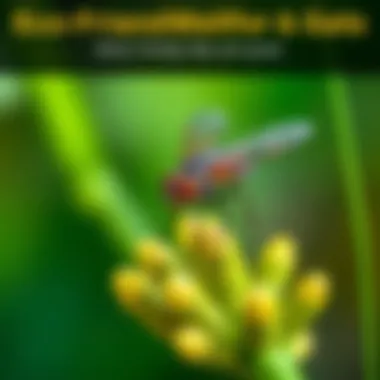
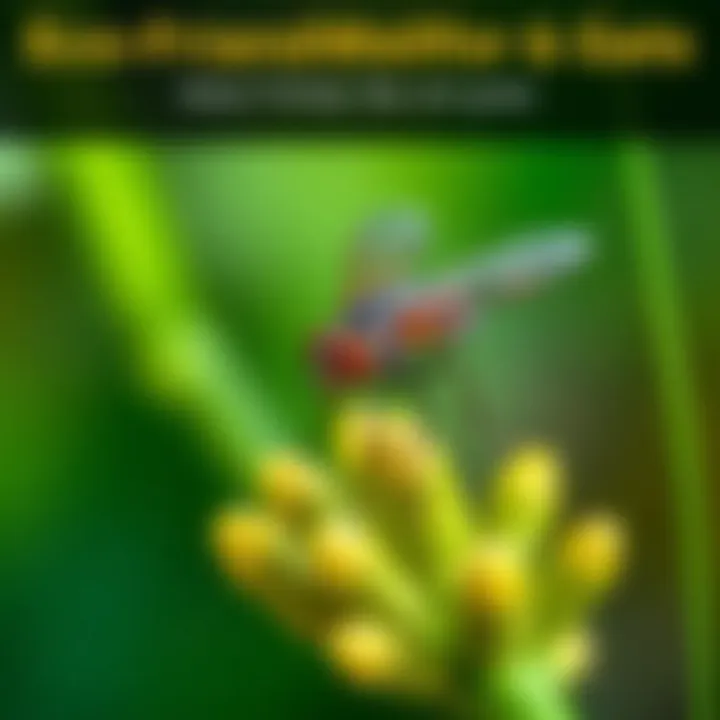
Signs of Infestation
Visual Indicators
Visual cues such as spotting flies or gnats buzzing around your space are often the first signs that you have an infestation. These insects are typically drawn to areas with poor sanitation or food sources left out in the open. Noticing clusters of these insects, especially near light sources, indicates they are congregating, which is not a good sign. A key characteristic of these visual indicators is their quickly recognizable shape and size, making them fairly easy to spot.
The distinctive appearance of gnats, often smaller than a fruit fly, may help you identify them swiftly. However, they can also blend into the background, so vigilance is paramount. This makes visual indicators a beneficial choice for quick assessments. However, the downside is that depending solely on visuals without checking less obvious signs can lead to underestimating the seriousness of the situation.
"An early check can prevent a full-blown invasion. You'd rather catch it early."
Behavioral Patterns
Another aspect worth considering is the behavior of flies and gnats in a specific environment. Observing how they act can guide you in assessing the severity of the problem. For instance, if you notice swarming around food or garbage, this suggests you are not only seeing a few strays but likely facing a larger group. The frenetic wing flapping is also a clear indicator of dissatisfaction with the current surroundings, pointing out something rotten in the state of your space.
Similar to visuals, these behavioral patterns serve as an effective indicator of a potential infestation. Recognizing when and where these insects are most active can help pinpoint food sources or breeding grounds, a valuable insight when planning your next steps. Yet, over-relying on behavior might overlook hidden populations tucked away in less obvious areas.
Common Locations
Flies and gnats have preferred spots that serve as their breeding or resting grounds. Identifying these common locations is crucial. You might find them lurking near fruit bowls, trash cans, or even under your sink where moisture accumulates. The primary characteristic of these common locations is that they typically provide food and moisture, essential to the lifecycle of these insects.
It’s this particular habit that makes common locations a popular reference point for dealing with infestations. Knowing where to look helps in setting up traps or taking preventive measures. However, it can sometimes lead to a narrow focus, where individuals only look in these frequent hiding spots, ignoring less obvious areas where these pests can thrive.
Common Breeding Grounds
Food Sources
Food sources play a pivotal role in attracting flies and gnats. Overripe fruits, spilled food, or even stagnant liquids can serve as a banquet for these pests. Flies, specifically, are known to converge on sweet or decaying organic material. The key feature about food sources is that not only do they attract these insects, they also provide the necessary conditions for breeding. Keeping your kitchen and dining areas tidy is essential to avoiding long-term issues.
This makes focusing on food sources a strategic choice in combating infestations. Unfortunately, any oversight in maintaining cleanliness can quickly reverse progress. Regular checks and maintaining an organized space are paramount in managing these common attracting factors.
Moist Environments
Moist environments contribute significantly to the prevalence of flies and gnats. Areas where condensation forms, or where there's a lack of proper drainage tend to be a hotbed for these insects. They're attracted to moisture because it provides them with an ideal breeding environment. Their life cycle can progress from egg to adult at astonishing rates, particularly in such conditions.
Understanding the importance of moisture can guide homeowners and business operators in taking preventive steps. Moist environments showcase a distinct feature—they often go unnoticed until the problem burgeons, so continual vigilance is necessary. With regard to long-term solutions, eliminating unnecessary moisture can drastically cut down on breeding potential.
Decay and Refuse Areas
Decay and refuse areas, like compost piles or garbage bins, are prime targets for flies and gnats, as these insects thrive on decomposing matter. The characteristic stink of decay is enough to draw them in from far and wide, making these locations their chosen habitats. This is why you’ll often see an uptick in flies near refuse sites during warmer months.
This characteristic of decay makes these areas a focal point in addressing infestations. While decay areas might seem obvious, they can also act as hidden traps if not monitored regularly. Neglect in maintaining waste disposal can lead quickly to overwhelming infestations, proving this is an area that requires constant attention.
Preventive Strategies
Preventive strategies are crucial when it comes to tackling the nuisance of flies and gnats. These insects can be both irritating and unsanitary, impacting our living and working environments. Focusing on preventive measures not only helps keep these pests at bay but also ensures a healthier atmosphere. A solid foundation of preventive strategies can save time and effort in the long run and minimize the need for reactive measures.
Sanitation Practices
Regular Cleaning Routines
Establishing regular cleaning routines is a cornerstone of effective pest management. Keeping spaces tidy, free from spills and waste, stops flies and gnats from finding a tempting breeding ground. A clean environment minimizes both the attraction of pests and their opportunities to reproduce.
The key characteristic of regular cleaning is consistency. Setting a schedule—daily, weekly, or monthly—ensures that surfaces are regularly purified. This consistency prevents any accumulation of food residues or organic materials that could attract pests, contributing a preventive effect in line with the overall strategy.
Incorporating specific tasks, like vacuuming under furniture and wiping down counter spaces, gives cleanliness a unique feature that directly impacts pest populations. Its advantages are clear: less garbage equals fewer flies and gnats, making this an effective and popular strategy.
Proper Waste Management
Proper waste management plays an essential role in reducing infestations of flies and gnats. This means not just disposing of trash correctly, but also using appropriate receptacles and ensuring they are frequently emptied. Sealed bins deter pests from accessing organic material that attract them, making it a beneficial choice for maintaining a pest-free zone.
A key characteristic of proper waste management is utilizing containers with lids. This simple practice provides a significant barrier against potential pest entry, thus limiting their ability to feed and breed. An advantage is that it helps prevent odors that commonly attract these pests, ensuring a more pleasant environment.
However, a unique feature of this strategy could involve community efforts—encouraging all members of a shared space to adhere to similar standards enhances effectiveness. Disadvantages may arise when individuals overlook their responsibilities, which can compromise the entire effort.
Storing Food Correctly
Storing food correctly is vital for preventing flies and gnats from entering our living spaces. This strategy involves placing food in sealed containers, refrigerating perishable items, and avoiding leaving leftovers exposed on countertops. By following these practices, the attraction that uncontrolled access presents is significantly reduced.
The key characteristic here is the use of airtight containers that thwart any crafty pests from accessing what's inside. This strategy is beneficial, as it not only keeps food fresh but also minimizes the chances of attracting unwanted insects.
A unique aspect of this method lies in educating individuals on labeling and organizing pantry items. Clear labeling aids in proper storage, making it easier to access food when needed without rummaging through open packages. Its only downside might be the initial expense of purchasing these containers, although the long-term benefits far outweigh the costs.
Environmental Adjustments
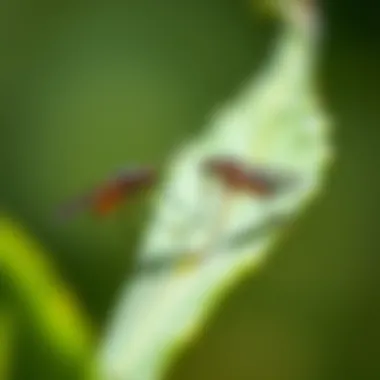
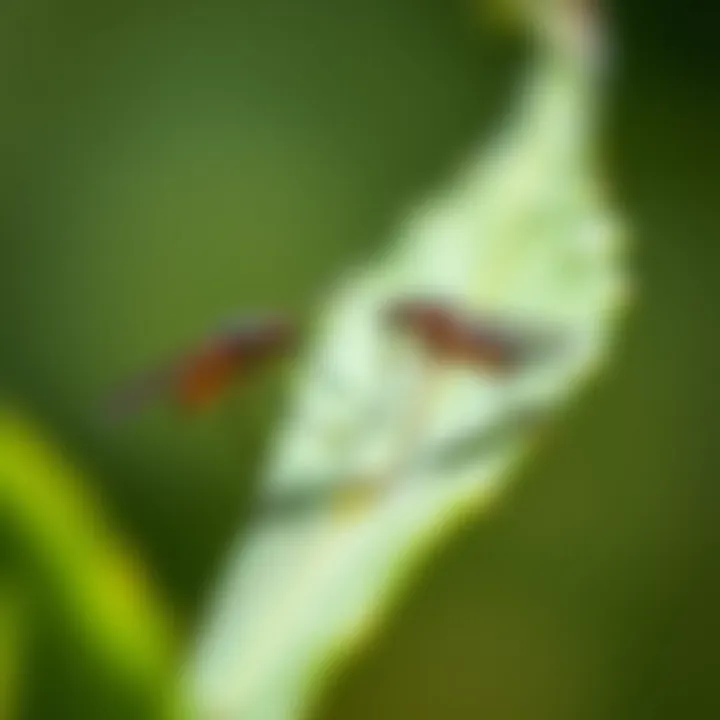
Utilizing Natural Repellents
Utilizing natural repellents can be effective in creating a less hospitable environment for flies and gnats. These products, commonly derived from essential oils or other plant-based ingredients, provide a gentle but powerful deterrent without resorting to harsh chemicals, making them a favored choice.
One key characteristic of natural repellents is their environmentally friendly profile. This characteristic appeals to those seeking to avoid synthetic chemicals, especially in homes with pets or children. They can be integrated easily into daily life, allowing conscious individuals to maintain a safe atmosphere.
However, while effective, the unique feature of natural repellents can sometimes be their short-lived efficacy. Frequent reapplication may be necessary, which could pose a minor inconvenience for some individuals. The advantages often outweigh the drawbacks when considering the overall safety and ecological impact.
Adjusting Lighting
Adjusting lighting is a strategy often overlooked, yet it holds considerable promise for managing fly and gnat populations. These insects are attracted to light sources, particularly in dusk and dawn hours. By altering outdoor lights or using yellow bulbs, which are less appealing to many insects, a barrier is formed that reduces their attraction.
The key characteristic of this adjustment is its simplicity. Making slight changes to lighting, such as switching off unnecessary lights or using less alluring options, can yield significant results. This is often a popular choice due to its low cost and minimal effort required.
However, the unique feature of this approach lies in the need for proactive management—ensuring that lighting changes are consistent. If not executed with diligence, it may lose effectiveness, but the advantages often lead to a noticeable decrease in nighttime pests.
Enhancing Airflow
Enhancing airflow in a space helps to create an environment that is less conducive to flies and gnats. Increasing ventilation reduces the humidity that these pests typically thrive in. This can be accomplished through the strategic placement of fans or by keeping windows open during cooler times of day.
A key characteristic of airflow enhancement is that it is a natural solution. Encouraging airflow stands out as a sustainable method to deter pests without the need for chemicals. It works effectively within a room’s architecture, utilizing existing features to promote better conditions.
The unique aspect of enhancing airflow is that it can improve overall indoor air quality. The drawbacks may include reliance on external conditions, like weather, but overall it typically remains an advantageous strategy for maintaining freshness and pest management.
To maintain a pest-free environment, combining multiple preventive strategies yields the best results. It's often the synergy between sanitation practices and environmental adjustments that truly makes a difference in keeping flies and gnats at bay.
Home Remedies
Home remedies play a significant role in the overall strategy for eliminating flies and gnats. Unlike chemical solutions, which often come with a slew of precautions and potential side effects, these remedies offer a more natural approach. They tend to be cost-effective and use items commonly found in most households. People are increasingly leaning towards eco-friendly solutions, and home remedies fit this bill perfectly.
Using these remedies can also foster a sense of empowerment, allowing individuals to tackle pest problems without resorting to commercial products. By understanding some key techniques, you can find effective ways to reduce those pesky pests that can invade our spaces. Below are some DIY traps and the specific household ingredients often used.
DIY Traps and Repellents
Vinegar and Dish Soap Trap
The vinegar and dish soap trap stands as a stellar example of a homemade pest solution. Its allure lies in its simplicity. By mixing vinegar, which attracts flies and gnats, with a few drops of dish soap, you create a potent concoction. The soap breaks the surface tension of the vinegar, causing these pests to sink rather than escape once they land.
A key characteristic of this trap is its ability to effectively lure various species, taking advantage of their attraction to the fragrant acids in vinegar. For many, it is a popular choice for both its efficiency and ease of preparation. However, one consideration is that while it does effectively trap a number of flies, it might not support long-term management alone. Setting multiple traps and monitoring their significance over time is essential in assessing its overall effectiveness.
Cider Vinegar Bait
Cider vinegar bait is quite similar to the previous trap but typically adds a fruity, sweet aroma that many insects find irresistible. The advantage of using cider vinegar is its potency when it comes to drawing in gnats, especially those attracted to fermented scents. Adding a splash of dish soap enhances its effectiveness by preventing escape.
Also, its aromatic profile makes it a particularly attractive bait in kitchens or areas where these pests tend to congregate. However, a unique feature of cider vinegar bait is that while it attracts, its efficacy can vary based on the environment. In areas with plenty of competing food sources, its effectiveness may be diminished, so regular adjustments might be necessary.
Essential Oil Sprays
Essential oil sprays offer yet another layer of flavor in the fight against flies and gnats. Using oils like lavender, peppermint, or tea tree, these sprays serve as both a repellent and an air freshener. The appealing scents can deter unwanted insects while also brightening up the atmosphere of any space.
A distinct characteristic of essential oils is their versatility; they can be mixed into various solutions for application almost anywhere—be it kitchen counters, windowsills, or entry points. This can be a beneficial route for those looking for a dual-purpose solution that doesn’t rely on harsh chemicals. Nevertheless, be cautious, as essential oils can irritate some individuals, so test them in small areas first.
Household Ingredients
Baking Soda and Sugar
Baking soda and sugar form an unlikely but effective pairing for a DIY pest control method. The sugar lures the flies, while the baking soda disrupts their digestive systems, leading to their demise. A characteristic trait of this combination is its straightforward nature—simply combine the two ingredients in a dish and wait.
The advantages of baking soda and sugar include the ease of procurement and the absence of toxic chemicals. However, it’s important to bear in mind that this method primarily works for small populations of flies; heavier infestations may require additional approaches as part of an encompassing strategy.
Soap and Water Solutions
Soap and water solutions serve as another easy-to-make remedy that attacks flies directly. When sprayed on the insects, the solution suffocates them by clogging their spiracles, or breathing holes. The key aspect of this solution is its immediate effectiveness—you can see results almost instantly.
This method is particularly suitable for indoor spaces, where chemical exposure poses a risk to children and pets. On the downside, one should be careful not to spray on plants, as it can harm them as well. It’s crucial to target the pests rather than the beneficial insects or your flora.
Peppermint Oil Efficacy
Peppermint oil, renowned for its refreshing aroma, can also be a fierce fighter against flies and gnats. Its potent scent disrupts insect pheromones and repels pesky visitors. The great thing about peppermint oil is its naturally appealing fragrance, which can leave spaces smelling fresh while keeping bugs at bay.
Importantly, this remedy is a totally natural solution. Still, every rose has its thorns—some people may have sensitivities to peppermint oil, so it’s smart to implement this cautiously, especially in shared living spaces. Understanding how to introduce such elements responsibly into your home can make a world of difference.
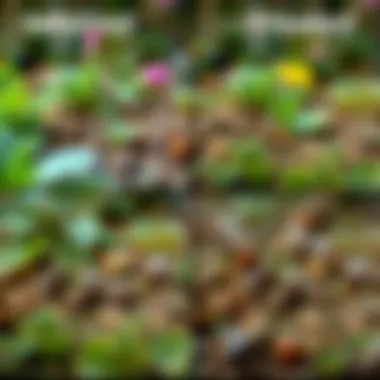

Commercial Solutions
Addressing fly and gnat infestations can be daunting, especially if traditional methods aren't achieving the desired results. Commercial solutions provide a systematic approach to tackle these pests effectively. Utilizing these products and services can be a game changer, as they often incorporate advanced formulations and strategies tailored for a range of environments, ensuring that you can reclaim your space from annoying intruders.
Insecticides and Pesticides
Types of Targeted Products
Different insecticides and pesticides target specific pests, each with its unique modus operandi. For instance, organophosphates are widely acknowledged for their potency, acting on the nervous system of insects. However, newer biopesticides, derived from natural materials, have garnered attention for being eco-friendlier and less harmful to non-target species. These products can be particularly beneficial as they often minimize the adverse environmental impact while effectively tackling infestations.
What stands out here is the selective action of these products; while they are lethal to flies and gnats, many leave beneficial insects like bees largely unharmed. Nonetheless, one must be cautious—certain insecticides carry residual risks, especially in areas frequented by pets or children.
Application Methods
Efficient application methods make a substantial difference in the effectiveness of insecticides. Spraying, fogging, and baiting each have their distinct advantages. For example, fogging disperses a fine mist of insecticide, creating a large area of coverage in outdoor settings, which is particularly useful in eliminating flying insects like gnats. On the other hand, baiting appeals to specific behaviors, drawing flies to a lethal point.
The beauty of employing a targeted application technique is not only about maximizing effectiveness but also minimizing waste and avoiding unnecessary exposures to humans and pets. However, one must remain informed about the proper dosage and possible drift during application, as overspray can lead to unintended consequences.
Environmental Considerations
Using commercial pest solutions comes with an essential layer of responsibility—considering the environmental implications of these products. Many newer insecticides are designed with sustainability in mind, posing lesser threats to ecosystems. For instance, products with low toxicity to mammals are becoming increasingly popular among providers focused on wildlife-friendly solutions.
The environmental footprint of these chemicals is vital, especially if used near bodies of water, where runoff can cause significant ecological damage. It’s crucial to balance effectiveness with environmental stewardship, ensuring that efforts to control pests do not inadvertently harm the surrounding wildlife.
Professional Extermination
When to Call a Professional
Sometimes, even the best amateur attempts to deal with flies and gnats may hit a wall. If there's a noticeable surge in pest activity, it might be time to consider professional intervention. Experts can make informed decisions based on their understanding of pest behavior and biology, providing solutions that might not be in the toolkit of a typical homeowner.
Calling in the pros often leads to a more comprehensive approach, as they can identify the source of the problem and provide a long-term solution rather than just a quick fix. Remember, though, the cost might be a con for some, as services range widely in terms of pricing.
Finding Qualified Services
After deciding to seek professional help, the next step is navigating the myriad of pest control companies. Look for services that are licensed, insured, and have glowing customer reviews. Online platforms, such as Yelp or Google Reviews, can be great resources for this crucial step.
Often, effective communication sets apart the 'good' from the 'best.' A company that takes time to assess your pest issue before suggesting a solution demonstrates a tailored approach, which is always beneficial.
Evaluating Effectiveness
When the dust settles, assessing how effective the treatment has been is essential. Oftentimes, a professional service should provide follow-up visits to ensure the problem has been addressed long term. Keep a lookout for any new activity and communicate with the service provider if issues persist.
The ability to judge effectiveness depends on established criteria—like observing pest populations and noting a reduction in sightings; hence it's useful to maintain clear records of such observations.
Professional pest control is not just about eliminating the current problem; it's also about preventing future infestations through structured management.
Maintaining a keen eye on both commercial products and expert services paves the road to a pest-free environment, ensuring that flies and gnats are dealt with efficiently and responsibly.
Long-Term Management
Long-term management of flies and gnats is vital if you want to maintain a pest-free environment. It's not simply about getting rid of these pests at a single point in time. Instead, it involves creating strategies that ensure these nuisances do not return, establishing a resilient approach against infestations. This aspect highlights the ongoing commitment to proactive measures that adapt to the ever-changing behaviors and life cycles of these insects. By prioritizing long-term management, you decrease dependency on quick fixes that may not address underlying conditions, ultimately saving you time and effort in the long run.
Regular Monitoring
Establishing a Monitoring Routine
Creating a consistent monitoring routine is crucial. It means you'll be keeping an eye on specific areas known for fly and gnat activity. This practice allows you to notice any signs of returning pests before they escalate into a larger issue. Moreover, this routine serves as a preventive measure. It helps you become more familiar with how often and where infestations occur in your space. One key characteristic of a solid monitoring routine is that it’s a structured approach, making it easier to identify patterns of activity. The unique feature lies in its adaptability; you can adjust it according to your specific needs, changing the surveillance frequency based on past infestations or environmental changes. While it can be a time investment, the early detection of pests can outweigh the effort involved.
Adjusting Strategies Based on Findings
Once you've established a monitoring routine, adjusting your strategies based on what you observe is essential. This means being flexible and receptive to the data your monitoring provides. If pests seem to appear in certain areas more frequently, for instance, you can concentrate your efforts there. This key characteristic is all about being responsive, adapting your tactics in real-time. The unique feature of this approach is its focus on tailored solutions rather than one-size-fits-all methods. Adjusting strategies may require you to rethink your entire prevention protocol, but it is often a beneficial choice that maximizes your success rate in managing pests. However, it can also mean being prepared for constant change, which may not sit well with those who prefer a more stable approach.
Utilizing Technology for Tracking
Today, technology offers innovative solutions to track and monitor pest behavior. Utilizing apps or smart traps can provide effective insights into when and where flies and gnats are most active. This characteristic offers you the chance to engage with real-time data that was previously hard to access. A unique feature is the possibility of integrating automated alerts that notify you of increased activity. Essentially, this tech-savvy approach can save you time and effort by enabling proactive decision-making about pest management. While it might come with an initial cost, the long-term insights gained make it a potentially worthwhile investment for those serious about controlling insect populations in their environments.
Sustainable Practices
Encouraging Natural Predators
Promoting the presence of natural predators is an effective way to manage fly and gnat populations sustainably. This practice involves attracting beneficial insects like ladybugs or lacewings, which feast on these pests. A key characteristic of this method is its eco-friendly nature; it utilizes nature’s own balance rather than aggressive chemicals. One unique aspect is that you are not just combating a problem; you’re contributing to biodiversity in your area. While this approach can be highly effective, it may take time to cultivate these predator populations, requiring patience and consistent environmental management.
Integrated Pest Management Approaches
Adopting Integrated Pest Management (IPM) is another strategy that brings together various techniques to control fly and gnat populations effectively. This approach emphasizes monitoring, preventive measures, and the careful use of pesticides only when necessary. The key advantage of IPM is its holistic perspective—addressing the root causes rather than just suppressing the symptoms. The unique feature of IPM lies in its flexibility; you can blend traditional methods with new technological solutions. However, it requires more effort in planning and execution, which might scare off those looking for simpler solutions.
Community Involvement
Community involvement can have a significant impact on managing pests effectively. Getting neighbors on board with long-term fly and gnat strategies can amplify efforts, making it easier to control populations over a wider area. This characteristic fosters a collaborative spirit, encouraging shared knowledge and resources. One unique aspect is the potential for community education initiatives that can raise awareness about infesting species and effective control methods. While it may seem challenging to coordinate community-wide efforts, uniting your local area can lead to a healthier environment with fewer pests in the long term.







